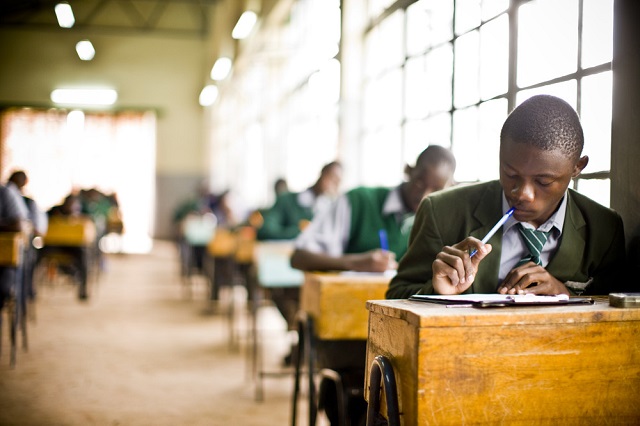Editorial Comment: People must move from floods-prone areas

 Government recently declared the flooding at Tokwe-Mukorsi in Masvingo a state of national disaster. Amid an estimated 900mm downpour in an area where annual average rainfall is around 400mm, the lives of about 60,000 people – 20,000 in the Tokwe-Mukorsi Dam basin and 40,000 downstream – were in immediate danger. It was hair-raising seeing an aerial clip of the catastrophe on national television showing houses inundated to roof level. The ridge of bricks that constituted the top part of the outer walls of houses appeared, from a distance, like the first line after the foundation as a deep universe of water spread across the mountainous area.
Government recently declared the flooding at Tokwe-Mukorsi in Masvingo a state of national disaster. Amid an estimated 900mm downpour in an area where annual average rainfall is around 400mm, the lives of about 60,000 people – 20,000 in the Tokwe-Mukorsi Dam basin and 40,000 downstream – were in immediate danger. It was hair-raising seeing an aerial clip of the catastrophe on national television showing houses inundated to roof level. The ridge of bricks that constituted the top part of the outer walls of houses appeared, from a distance, like the first line after the foundation as a deep universe of water spread across the mountainous area.
By declaring a situation a disaster, the government would be requesting external support, having judged that it may be unable to tackle the challenge on its own.
Typically, the response is sought and directed to the specific problem area, in this case, Tokwe-Mukorsi. Hundreds of thousands of dollars have been and are being mobilised as well as tents for temporary housing, medicines and clothing. That was a positive, timely response to that disaster.
But, technically speaking, a weakness of such declarations has always been that areas or communities not covered by the proclamations tend to be overlooked as government and donors focus most on where the conditions are deemed gravest. A situation must be certified “grave enough” to deserve the declaration that it is a disaster zone, and thereafter attract support.
Tsholotsho was apparently caught up in this unfortunate state of affairs. Hundreds of people are homeless in parts of the district after their houses were destroyed in the inundation, many have nothing to eat, children are out of school and livelihoods have collapsed. The Tsholotsho scenario tells us that contrary to common understanding of disasters and disaster response strategies, a catastrophe can be localised but still inflict as much human suffering and infrastructural destruction as in more expansive areas and larger populations.
Our response to Tsholotsho, an area we have always known to be prone to flooding, like Muzarabani and the south-east Lowveld, was, we must admit, a bit late. But the fact that 12 ministers descended on the area yesterday has to make us and those affected, recognise the seriousness with which government is treating the flooding in Tsholotsho and its resulting impact. Senior Minister of State, Simon Khaya Moyo, led the ministerial delegation charged with assessing the damage caused by recent floods as well as drawing up a list of needs of the affected families.
Others on the tour are Minister of State for Provincial Affairs in Matabeleland North Cain Mathema, Professor Jonathan Moyo (Information, Media and Broadcasting Services), Sydney Sekeramayi (Defence), Dr Ignatius Chombo (Local Government, Public Works and National Housing), Dr Joseph Made (Agriculture, Mechanisation and Irrigation Development), Dr Lazarus Dokora (Primary and Secondary Education), Dr David Parirenyatwa (Health and Child Care), Dr Obert Mpofu (Transport and Infrastructural Development), Kembo Mohadi (Home Affairs), Saviour Kasukuwere (Environment, Water and Climate) and Walter Chidakwa (Mines and Mining Development).
It is a strong team, almost half the strength of our Cabinet, whose individual portfolios have something to do with national disaster preparedness and response.
The Civil Protection Unit has already reported that wards six and eight were adversely affected by the January 27 to February 8 floods.
The worst hit areas include Butabubili, Gariya, Dzokotsi, Mtshina, Sandawana, Sasedza, Kalave in Ward Eight and Mahlaba, Mapili Mahlosi, Mbanyana, Matupula, Mbamba and Jimila in Ward Six.
Ward Eight was affected after Gariya Dam spilled while in Ward Six flooding was caused by two overflowing Gwayi and Zumbani rivers.
A child drowned and three from Butabubili were injured. Around 300 pupils missed classes for up to 10 days as they could not access their schools. A total of 78 homes were destroyed in Butabubili, Gariya, Sandawana and Kalane.
Senior Minister Moyo’s team saw the extent of the disaster yesterday and we expect the visit alone, even before they give a report, to encourage those who can assist to do so immediately so the suffering our people have endured since the floods is lessened.
We always have problems in Sipepa area. With this experience, we expect long-term strategies so that people don’t face the same challenge again. Voluntary movement of settlements from flood-prone Sipepa to higher ground elsewhere is a possible, more permanent solution. We appreciate that our people and their ancestral lands are inseparable but having to live in a state of permanent emergency does not sound right. Building stronger homes is no sensible defence if the floodwaters rise to the roof as they did at Tokwe-Mukorsi. In the meantime, those affected by floods in Tsholotsho demand food, shelter, clothing, access to health care and comfort.
We read recently Dr Chombo saying that government could not respond promptly to the Tsholotsho disaster because the provincial administration, led by Cde Mathema, had not raised the red flag. The apparent inaction at Cde Mathema’s office has triggered accusations that government did not take the flooding in Tsholotsho as a serious matter. That is unfortunate, but we advise that there is nothing like an excessive response to a disaster. Human suffering is humiliating and unnecessary, particularly if it can be prevented or alleviated.








Comments